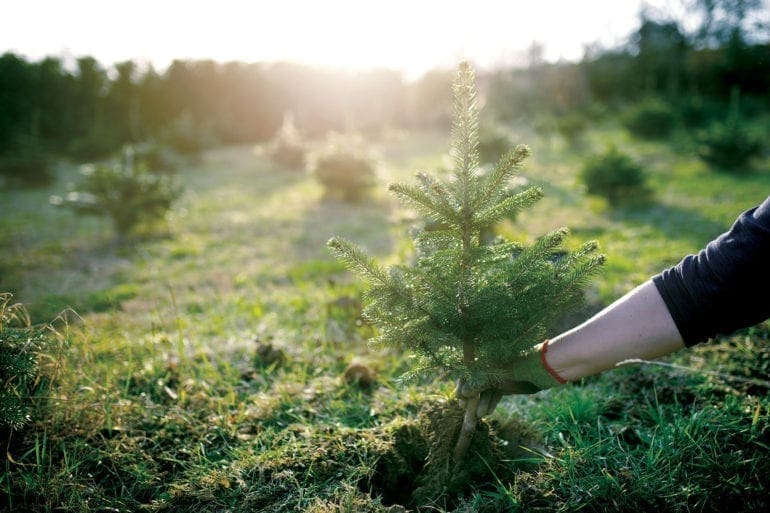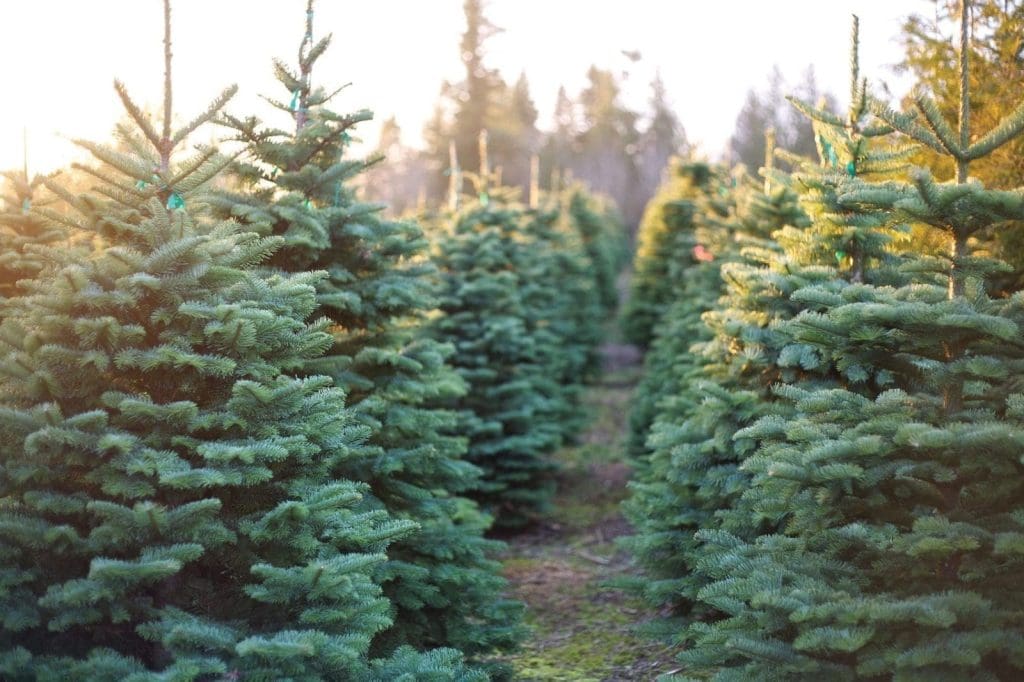The 16th century German tradition of placing and decorating a tree in the home during the Christmas holiday has crossed oceans and been practiced for centuries. But how do modern day cities ethically grow and dispose of the millions of trees that are sold every year?
By Rosy Alvarez
Christmas traditions have a history that predates their Christian associations. In 16th century Europe, many different regions used evergreens, palms and other green trees of the like to honor their gods of agriculture and protect their homes from evil spirits. Germany is accredited with the tradition of what we know today as Christmas tree decorating. There is a myth that Protestant reformer Martin Luther was the first to decorate his tree with lighted candles that reminded him of the stars. Hundreds of years later, Germans migrated to the Americas and brought their tradition with them—Christmas trees were not accepted in American culture until well after the 1840’s.
Since then, we have been able to breed and farm many different kinds of firs, pines and spruce varieties that give off that delicious, minty-citrusy scent. New Jersey is known as the seventh largest provider of Christmas trees in the country. Tree farmers built a community amongst their own and eventually became the New Jersey Christmas Tree Growers Association (NJCTGA). Although not all of the farmers in the state are part of the association, it represents a majority of farms throughout the state. We all love shopping to pick our own trees, but does our favorite holiday practice have negative effects on the environment?
We are used to picking our trees every year either from street vendors or cut-your-own tree farms. Climate change activists will be happy to know that rather than chopping down trees from national parks and state forests, there are designated farmers in every state that specialize in harvesting the holiday favorite. What most don’t know is how much meticulous effort goes into harvesting the many varieties of trees. Farmers plant Christmas trees as early as 10 to 20 years because that is how long it takes them to reach maturity. At any given time, a farm can have up to 65,000 trees with 10,000 ready to cut and sell on any given year.
Traditionally, trees were farmed on land that was no longer able to grow produce. Although they take fastidious caring-for, they are stronger and less finicky to environmental changes than vegetables. This way farmers re-used their land that otherwise would have been left barren and it also allowed them to earn extra income. Of course, this method was predominant back when Christmas trees weren’t a million-dollar industry. Today, trees are grown on fertile land because the better the soil, the better the tree.

From their very beginning as seedlings (one to two years old), they are placed in special temporary beds of soil for several years. This is because its easier to care for them and move them when they are mature enough to be planted solidly into the ground. There are two ways of replanting seedlings, one is moving all the younger trees simultaneously so that as they grow they will stay the same age and height. The other is to replant younger trees along with older trees. The method is usually chosen based on the preferences of the farmer. That being said, farmers also work very hard to make sure trees don’t contract any diseases and are not killed off by weather, weeds, grazing deer, pruning needs, pests, or poor soil quality.
The tree farms don’t only specialize in tree production, they also offer family-fun activities for the holidays and sell other holiday-related products such as wreaths, handmade decorations, and hot cocoa. Some farms have been ahead of the curve for decades, opening up their fields for cut-your-own events for over 25 years. Farmers often recount stories of people who used to cut when they were kids and now bring their own kids to do it. As if there weren’t already enough reasons to shop mom-and-pop farms, many also host charity initiatives such as food drives or donating proceeds from their sales to those in need. (Be sure to ask about donations while you pick your tree!)
After all the gifts are unwrapped and the lights are taken down, the last thing left to do is to say goodbye to the tree. Guilt weighs on some who place the tree on the curb for sanitation to pick it up and whisk it away, while others chop the tree into pieces and use it for firewood in order to not let it go to waste. However, chopping the trees for firewood is not recommended. Due to its natural oils that stick on the chimney walls, they are a dangerous fire hazard. Lucky for us, there are many ways to dispose of your holiday tree and they are all environmentally friendly. In certain parts of New Jersey, you can make an appointment with the sanitation department to have your tree picked up for recycling. There is also the option of taking your tree to a park or local lot to have your tree chipped and given back to you for spring gardening mulch at no cost. In other places, you can just drop your trees off and the mulch is kept by the county for spring gardens. No matter what you choose, there are so many ways to ethically recycle your tree that allow you to splurge on a regal fir and not worry about deforestation or pollution.
Such as any industry, there are always people who don’t acquire their goods ethically. Climate change and deforestation are major concerns in this day and age and it always helps to know that you can celebrate traditionally, without harming the environment. When the season concludes, we can rest assured that the tree won’t just be sitting in a landfill as there are many options that empower us to recycle without producing waste. Most Christmas trees become mulch and are reborn months later into fresh spring flowers.
The New Jersey Digest is a new jersey magazine that has chronicled daily life in the Garden State for over 10 years.


